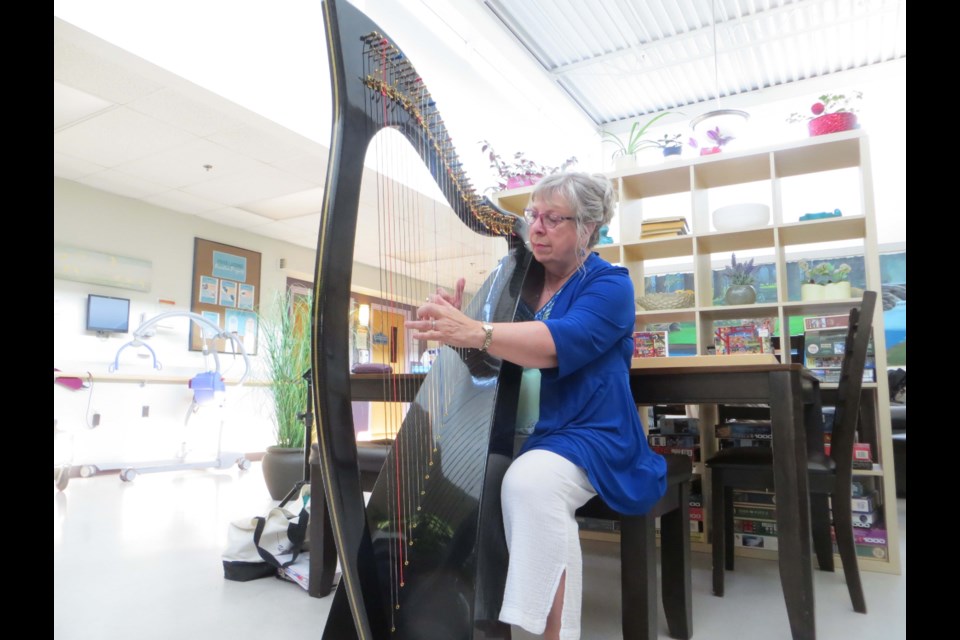Cheryl Dalmer spent a large part of her life writing and producing in the film industry before retiring in 2017. Today she is St. Albert Sturgeon Hospice Association’s first harpist therapist.
Dalmer arrives at Foyer Lacombe every second Thursday with her 38-string carbon fibre harp and plays in the main activity centre for an hour. Residents and families gather in a circle to listen and relax. If residents are too ill to attend, she moves the harp to their room and plays a private concert.
“What we do in this setting is open up a space to let whatever is happening to a patient happen. I’ve had people start singing. That was common in memory care. There are people that will start reaching out as if there is something there. Whatever is happening is true to them. What I do is about bringing comfort to the person and to the family,” said Dalmer, a certified harp therapist practitioner (CHTP).
The accredited CHTP was hired in April after SASHA chair LuAnne Sirdiak stumbled upon harp therapy quite by accident. Sirdiak attended a four-week harp session at Wellspring in Edmonton where Dalmer led the harp circle. Since Dalmer already performed at Pilgrims Hospice, Sirdiak invited her to play at Foyer Lacombe.
“The concerts were so successful and there was an amazing response from staff, the family and patients. The music has an ethereal quality that moves you to your core. I’m sure this could become one of the most beneficial support programs SASHA can offer Foyer Lacombe residents. It’s an excellent way to take residents out of pain and suffering for an hour,” Sirdiak said.
Medical professionals and support staff are continually exploring new tools for healing. A harp’s note patterns and vibrations can produce a calming effect that decreases stress hormones. Some enthusiasts even believe a live harp’s resonant vibrations have special healing qualities. However, this belief still requires medical validation.
Yet Sirdiak is confident the program is making a difference in residents’ lives.
“One woman looked like she was asleep and wasn’t moving. When the music played, her face became animated, and she smiled. One staff member said she never gets to see her like this. Even though her movement was limited, her face was so beautiful, and she opened her eyes and smiled. When the music ended, she was back in a comatose state.”
Currently across North America, harp therapy is used to help patients deal with chronic pain such as arthritis and fibromyalgia. Harpists are invited to intensive care units to help normalize baby's heart rates. Harp therapy is also used to reduce anxiety after surgery and for mothers in labour. Even animal shelters are introducing harp music to their four-footed residents.
As a certified therapist, Dalmer originally started in memory care playing to patients with Alzheimer’s disease and noticed people on the decline resonated with her. After playing the harp since 2002, she had finally discovered her niche.
“Anyone playing the harp has had special moments. It’s not just the music. It’s something beyond playing music. There’s a spiritual element. Besides receiving immense pleasure, it’s like being in a special place,” Dalmer said.
But in playing the stringed instrument, the harpist also receives a gift.
“The other thing it gives me is healing both physically and emotionally. You can go from feeling anxious to feeling calm in minutes. That’s what I do for patients, and it gives me such joy. I feel so fortunate I can use this instrument to be of service. I feel right.”




